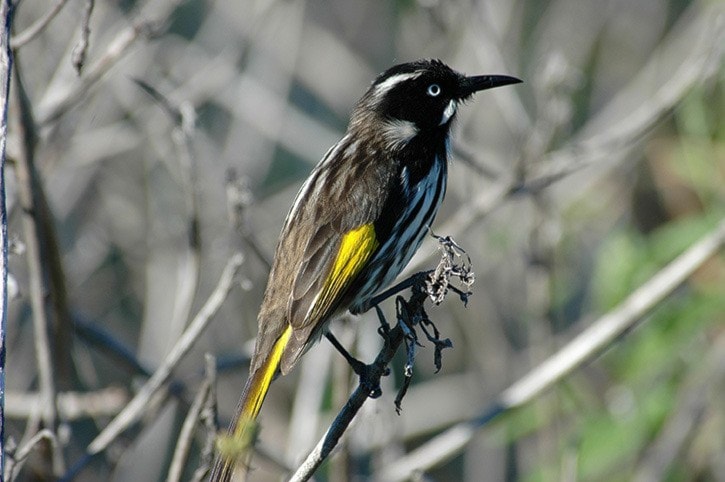Birding in some parts of Australia is a completely different experience to birding in most of Canada. Australia has more large birds and many more colourful birds. Many of the bird families are also very different.
Birds like warblers, sparrows, woodpeckers and hummingbirds are commonplace for us, but entirely non-existent in Australia. Instead, they have honeyeaters, parrots, thornbills, gerygones, and the list goes on.
During our recent 17-day bird tour we saw 25 different species of honeyeater, 12 parrots, two thornbills and three gerygones. They are families, however, which occur both here and in Canada, but the diversity is very different.
For example, Canada has just one species of kingfisher, whereas Australia has nine; Canada has four species in the pigeons and doves family, Australia has 16. In contrast, Australia has just three species of gulls, whereas Canada has 20, and Australia has just 12 species of ducks compared to 30 in Canada.
One of my favourite families is the honeyeaters. As the name suggests, these birds are largely nectar eaters and therefore fill the same niche as the hummingbirds in North America. One of the factors that accounts for the low number of hummingbird species in Canada, is the limited availability of nectar producing flowers.
By contrast, a great many of Australia’s native trees produce showy flower. The diversity of flowering trees has lead to a diversity of nectar eating honeyeaters; in total, there are 70 species of honeyeater in Australia. Different species are adapted to feeding on different flowers.
This has resulted in a wide range of both body size and shape, and bill size and shape. The smallest honeyeater is the Scarlet Honeyeater. At just 10-11 cm in length, it feeds high in the trees on relatively small flowers. The entire head, breast and back is bright red, the wings are black, the belly is white. It is a spectacular looking little bird, but can be quite difficult to see well.
The largest of the honeyeaters is the Yellow Wattlebird. At over 40 cm in length, it is about the same size as an American Crow. Our tour was restricted to northeastern Queensland, so many of the honeyeaters were out of range for us. But the 25 species we did see provided a good cross-section of the family. We did see the delightful little Scarlet Honeyeater, but not the large wattlebird.
Some of the honeyeaters are nomadic. Since most of Australia has a desert climate, water is the driving force behind bird distribution. Many of the dry country species, (not just honeyeaters), must adjust their breeding times and locations to match the availability of water. At present, much of the northern interior part of Australia is undergoing a drought. As a result some of the dry country species have moved out of the interior and toward the coast. One of these nomads is the banded Honeyeater. We saw a small group of four or five of these near a town called Mt Carbine. Like the Scarlet Honeyeater, this is a very small bird. It is entirely black and white: black above, white below with a black band across the breast.
The honeyeater pictured here is a New Holland Honeyeater. We did not see one of these on our tour, but the black, white and yellow colours in this bird are typical of the colours found in a great many of the honeyeaters.
